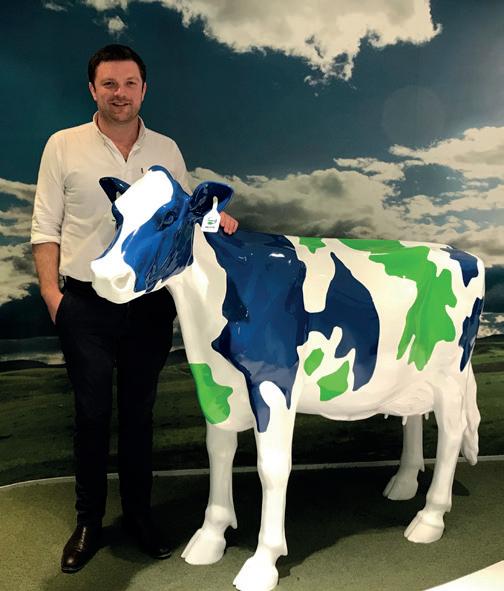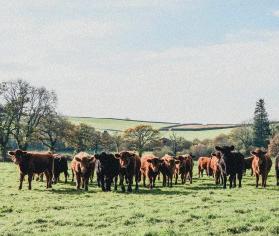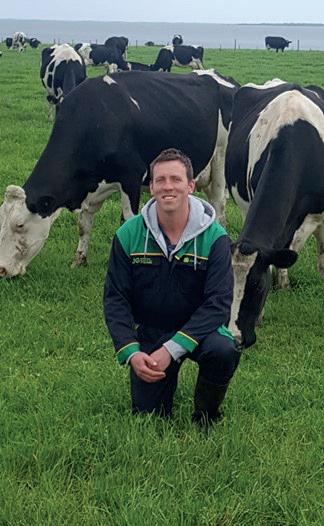
6 minute read
Nuffield Farming Finances – Update and Explanation
NUFFIELD FINANCES
….. This article provides an update and explanation of our latest Finances – and some parts are retained from previous versions to provide an ongoing reference. We are very fortunate to have strong finances as we operate in the new ‘covid environment’. What is more, the support of our sponsors has continued much as before and, importantly, substantial new donations have been received. Long may this situation continue, but, as you might expect, Trustees have conducted contingency planning against a variety of scenarios.
Advertisement
AN HISTORICAL PERSPECTIVE…
Since 1947, when our scholarships were first awarded and funded by the Nuffield Foundation, the Nuffield Farming Scholarships Trust has assumed, firstly responsibility for scholarships costs (in 1956) and later all finances (in 1968). The organisation became a registered charity and company limited by guarantee in 2003 and since then has been run under the legally binding rules and regulations of these bodies. The Trustees are responsible for setting strategic objectives, ensuring that the Trust complies with its formal obligations and authorising the annual budget for the Director to implement.
Currently, Nuffield Farming is fortunate to receive sponsorship for all scholarships awarded. Indeed, more organisations have promised support than the number of scholarships available. In general terms, annual donations are used to fund a proportion of overheads with the balance being made up by general sponsorship along with investment income, donations and some scholar sponsorship funds. In recent years, until 2018-19, this has provided a small operating surplus (after deduction of major donations) in the order of 5% of normal income. However, the implementation of the Strategic Plan has meant that an operating deficit approximately equivalent to 10% of normal income was incurred during the 2019-20 financial year. More general sponsorship would be welcomed! Nevertheless, because of the generosity of major donors the accounts show a healthy surplus of approximately £230k in 2019-20.
Over the years the Trust has built up a portfolio of investments that provides reserves for the short and long term. Despite initial decline at the beginning of the covid emergency, as reflected in the 2019-20 Statutory Accounts, and the uncertainty of the markets the value of these has recovered during recent months.
HEADLINES FROM RECENT YEARS 2013 – 2020
Total Net Assets: Investment Holdings: Expenditure less Scholarships: Cost of Administration & Overheads:
2012-13
£835,100 £735,300 £164,500 £114,000
2019-20
£2,858,493 £2,618,250 £292,950 £219,700
Trend >Tripled <Quadrupled +78% +64%
FINANCIAL OBJECTIVES, RESERVES ALLOCATIONS AND INVESTMENT STRATEGY
(from the 2019-20 Trustees Annual Report and the Policy)
The strategic management of Trust’s finances are run according to the policy setting out the overarching Financial Objectives, Reserves Allocations and Investment Strategy. The overarching Financial Objectives of the Trust are to: maintain two years’ expenditure in reserve; provide stable and consistent levels of expenditure and maximise returns, but within the agreed level of risk.
To enable a method of monitoring progress Trustees have determined to establish short and long term reserves. The Short Term Reserve retains the net surplus of all income (including investment income), less any expenditure and comprises of both unrestricted and restricted funds at a range of around £200,000. The Long Term Reserve benefits from any investment returns (other than income), together with any ad hoc donations that Trustees want to keep for the long term (such as legacies). Investment fees are paid from
this reserve. It can comprise a general (unrestricted) fund and other restricted funds where the intention is to hold a lump sum for the long term.
The detailed management of investments is the responsibility of the appointed professional managers. Trustees set an Investment Strategy as the mandate under which these operate. This is in two parts: Liquidity, or the amount of cash the organisation needs to have access to at any one time and an Investment Policy, setting out how money may be allocated. It is considered unlikely that the Long Term fund will hold less than 70% in real assets. In addition, a separate operational liquidity balance of £200,000 is retained to provide protection should the usual dividends from the invested funds be interrupted. Restricted funds are invested with unrestricted funds subject to the investment policy. Our donors are listed separately in the annual accounts. Trust assets are, therefore, invested to ensure that two years’ expenditure is available for unforeseen emergencies. Given the above, the investment policy is simply assessed against the cheapest available way of investing money in assets with similar volatility protection. Fund Managers are measured against a passive index of 80% in global equities and 20% in investment grade bonds. This policy and the Fund Managers progress is reviewed annually.
RECENT PERFORMANCE
Operating Surplus: Unrealised Investment Gains: Donations Restricted/Unrestricted Funds: Net Movement in Funds: Net Assets/Balance Carried Forward: Investments:
2019-20
-£60k -£133k £522k £229k £2,858k £2,618k
2018-19
£18k £79k £1,156k £1,175k £2,630k £2,865k
2017-18
£32k £7k £91k £122k £1,455k £1,520k
NOTES ON RECENT PERFORMANCE FIGURES:
• Operating Surplus. In recent years, until 2018-19, Trustees have set a budget with an operating surplus in the order of £25,000 – including investment income. This has not been sustained as explained above. • Unrealised Investment Gains/Losses. This is sometimes referred to as ‘investment growth’ (or decline) and for which there are no fixed targets. Rather the movement in funds reflects changes in the stock market with a negative figure indicating a reduction in value. The growth of investments in 2017-18 was less than we had become used to but returned to ‘normal’ in 2018-19. In 2019-20, however, we suffered a decline of -£133k. • Donations to Restricted/Unrestricted Funds. The Trust continues to benefit by the generosity of charitable and private donors to establish ‘restricted funds’ to be used specifically for their scholarships. In the 2017-18 financial year major legacies were received totalling £91k. In the last 2018-19 financial year donations were received for a John Oldacre Restricted Fund of £1,100k as well as a further legacy from the Jill Willows Estate of £162k. In 2019-20 major donations totalling £522k were received or formally promised. • Net Movement in Funds. This figure shows the final, overall, increase or decrease in funds. • Balance Carried Forward. This is the Net Worth of the Trust and reflects that of the previous year plus or minus the net movement in funds. Readers will appreciate that, whatever else has occurred the effective doubling of the Trust’s worth over 3 years must be considered exceptional! • Investments. This is the total value of the short and long term reserves. These have grown considerably over recent years and the unrestricted funds or free reserves now total £1,306k or just under 50% of the investments.
SUMMARY
The Nuffield Farming finances continue to be reassuringly strong. The overall annual increase in the value of the Trust is satisfactory and reflects the generous support of our sponsors and benefactors without which free reserves would have to be used to fund our activities. The operating deficit is disappointing, but, overall, the final result is still satisfactory. Our free reserves, along with the security of major legacies, enables Trustees to confidently allocate monies to new initiatives as these occur - still sure that funds will be available to carry the Trust over any downturn in its fortunes. Trustees continue to bear down on administrative costs subjecting them to regular scrutiny. However, they also recognise that increased levels of operational performance may need additional funding such as the implementation of the Strategic Plan. Going forwards, any further new initiatives will, similarly, need increased expenditure. It is likely that this will only be possible if new sources of funds are identified. Mike Vacher






